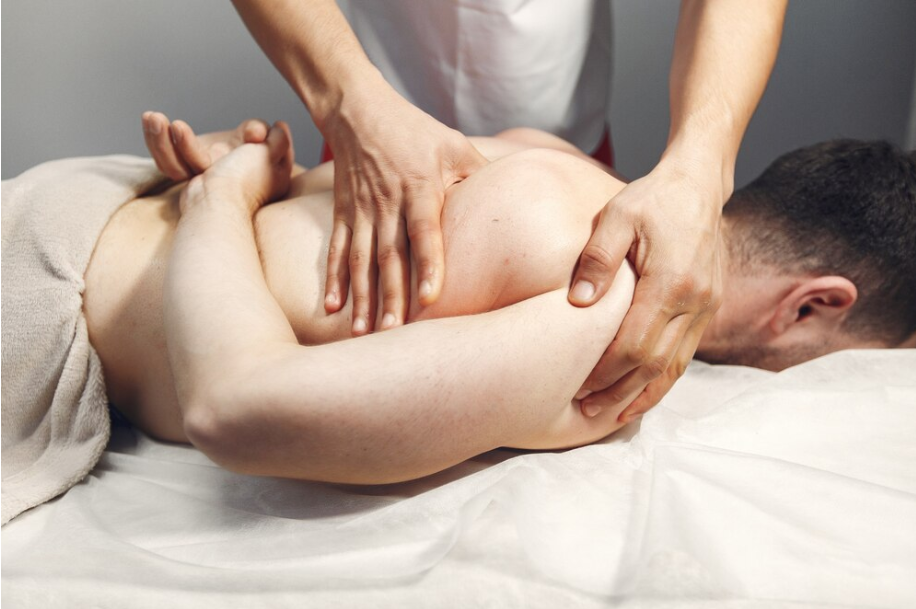Table of Contents

Deep tissue massage is a popular therapy known for its ability to relieve muscle tension, chronic pain, and stress. By targeting the deeper layers of muscles and connective tissues, this massage technique can provide long-lasting relief.
But, like any therapeutic practice, it’s essential to understand whether deep tissue massage is suitable for everyone. In this blog, we’ll explore who can benefit the most from deep tissue massage and who should approach it with caution.
Deep tissue massage is ideal for individuals who experience:
While deep tissue massage can be incredibly effective, it’s not suitable for everyone. Here are some cases where caution is necessary:
In these cases, it’s best to discuss your health concerns with the therapist at the full body spa massage centre before proceeding. Often, a lighter, more soothing massage technique may be recommended.

After a deep tissue massage, several physical and emotional effects may be experienced as the body adjusts to the therapy. Here’s what typically happens:
Muscle Soreness
It’s common to feel mild to moderate soreness in the muscles after a deep tissue massage. Since this technique involves applying firm pressure to deeper muscle layers, the body may react similarly to a strenuous workout. This soreness usually subsides within 24 to 48 hours.Increased Circulation
Deep tissue massage improves blood flow to targeted areas, promoting oxygen and nutrient delivery. This can result in a feeling of warmth or slight tingling in the massaged areas.Release of Toxins
The massage stimulates the lymphatic system, helping to release toxins that have built up in the muscles. Drinking plenty of water post-massage helps flush these toxins from the body and reduces any feelings of fatigue.Relaxation and Stress Relief
Even though deep tissue massage is intense, most people experience a deep sense of relaxation afterward. This release of tension in the muscles can lead to emotional and mental relief, helping you feel calmer and less stressed.Improved Flexibility and Range of Motion
Deep tissue massage can help loosen tight muscles, improving flexibility and range of motion in the joints. This is particularly beneficial for athletes or those with stiff muscles due to sedentary lifestyles.Possible Fatigue or Sleepiness
The intense stimulation of muscles during a deep tissue massage can make you feel tired or sleepy afterward. This is the body’s way of signaling that it’s time to rest and recover.Better Sleep
Many people report sleeping better the night after a deep tissue massage. The relaxation of muscles and release of tension can contribute to a more restful sleep.Emotional Release
Sometimes, a deep tissue massage can trigger an emotional release. This might manifest as feelings of sadness, relief, or even joy. This response is connected to the release of pent-up stress or trauma stored in the muscles.Temporary Sensitivity or Bruising
For some, deep tissue massage can cause temporary sensitivity or slight bruising, especially in areas where there was significant muscle tension. This is normal and should fade within a few days.To maximize the benefits of a deep tissue massage, consider these aftercare tips:
If deep tissue massage isn’t right for you, there are many alternative options that can provide relief and relaxation without the intensity. These include:
Deep tissue massage is a powerful technique for those dealing with chronic pain, tension, and stress. However, it’s essential to evaluate whether it’s the right option for you, especially if you have certain medical conditions. For personalized advice and a variety of massage therapies, a visit to a full body spa massage centre can help you find the treatment that best suits your body and wellness goals. Always consult with a therapist before undergoing any treatment to ensure your safety and well-being.
By understanding your body’s unique needs, you can make informed decisions and enjoy the benefits of a soothing and revitalizing massage experience.
Deep tissue massage is a massage technique that focuses on the deeper layers of muscles and connective tissues. It involves the use of firm pressure and slow strokes to target muscle knots and chronic tension areas.
Deep tissue massage is beneficial for individuals experiencing chronic pain, muscle tension, or stiffness. It’s also helpful for athletes, people with postural issues, and those recovering from injuries.
Deep tissue massage can sometimes be uncomfortable due to the intensity of pressure applied, especially in tight or knotted areas. However, it should not be overly painful. Always communicate with your therapist if the pressure is too much.
Unlike Swedish or relaxation massages, deep tissue massage uses more intense pressure and targets deeper muscle layers. While a regular massage is more focused on overall relaxation, deep tissue massage aims to alleviate chronic muscle pain and tension.
It's helpful to stay hydrated before the massage and to communicate any areas of discomfort or injuries to your therapist. Arriving in comfortable clothing and avoiding heavy meals right before the session are also recommended.
During the session, the therapist will apply firm pressure using their hands, forearms, or elbows to target deep muscle layers. The strokes are slower and more focused on specific problem areas to release tension and muscle knots.
After the massage, you may feel soreness similar to after an intense workout. However, you’ll also likely feel more relaxed and experience reduced muscle tension. It’s important to hydrate and rest after the session.
The frequency depends on individual needs. If you’re managing chronic pain or recovering from an injury, weekly sessions may be beneficial. For general muscle maintenance and relaxation, a session every 2-4 weeks can be sufficient.